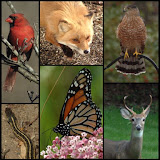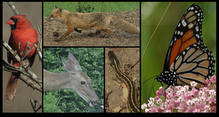Colvin Run Habitat - Our First GoPro Video
Notice the first bird makes his appearance by landing on the camera...it moves.
GoPro, of course, represents the new wave of small, go anywhere, go anytime video cameras. I mounted one on a small branch of the dogwood tree and pointed the camera at a suet feeder. Then I took about an hour of video to produce this 40 second video. Guess I need a motion detector.
A little later, and with the camera pointing in a different direction, six white-tailed deer passed through the Habitat.


















